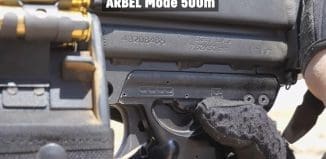Micro-Display to Enhance Soldier’s Situational Awareness

This post is also available in:  עברית (Hebrew)
עברית (Hebrew)
Situational awareness is a critical challenge in battlefield. US Army researchers claim that a micro-display screen may be just what soldiers need for delivering vital tactical data in challenged circumstances and superior data sharing on the battlefield.
A tiny head-mounted display would free up soldier to move easily, and quickly deliver visual elements even in low light or in situations with poor visibility. Nor would it require the soldier to glance at a peripheral device or otherwise divert attention away from the forward-facing scene. In addition, the display could improve broad-daylight operations.
The display would draw on sensor inputs from a range of data sources. It might be fed by the Nett Warrior suite (the dismounted soldier situational awareness net) and could also draw intelligence from vehicle-mounted command-and-control systems.
“It’s a size-weight-and-power issue,” said Gene Klager, deputy director for the Ground Combat Systems Division in the Night Vision and Electronic Sensors Directorate at CERDEC, the US Army’s Communications-Electronics Research, Development and Engineering Center. “You mount it on your head, and since it’s closer to the eye you don’t need the larger display. Then it can be small, lightweight and low power.”
Eventually, the micro-display would add an augmented-reality capability to the soldier’s toolkit. The soldier can use these points on a display to navigate rather than having to look down at a paper map or look down at the Nett Warrior user device. He has that information in front of him while maintaining heads-up, eyes-out situational awareness.
“It’s about displaying the right amount of information and displaying it effectively,” Klager said. “You have to make the displays user-configurable depending on the user function or preference. Say I was a driver: I’d want to have navigation information available, and perhaps close threats, but I don’t need to see long-range targets. If I were a gunner I’d want to see threats and friendly forces at all ranges.”
The development team has tackled several technical challenges to shrink screen size by orders of magnitude. Coping with bright sunlight was a major hurdle. Most commercial screen solutions can’t deliver the necessary brightness with the full color and high definition needed to support soldier applications, and commercial cell phone makers are generally focused on making screens bigger, rather than smaller, according to c4isrnet.com.
Engineers also have pushed for a screen that could deliver data not just legibly, but accurately. “Say we take friendly-force information, which is a two-dimensional grid coordinate. We have to accurately display that in three dimensions, in the real world. That icon has to be accurate,” Klager said. “That is the big challenge in augmented reality, the geolocation of the augmented information.”





























